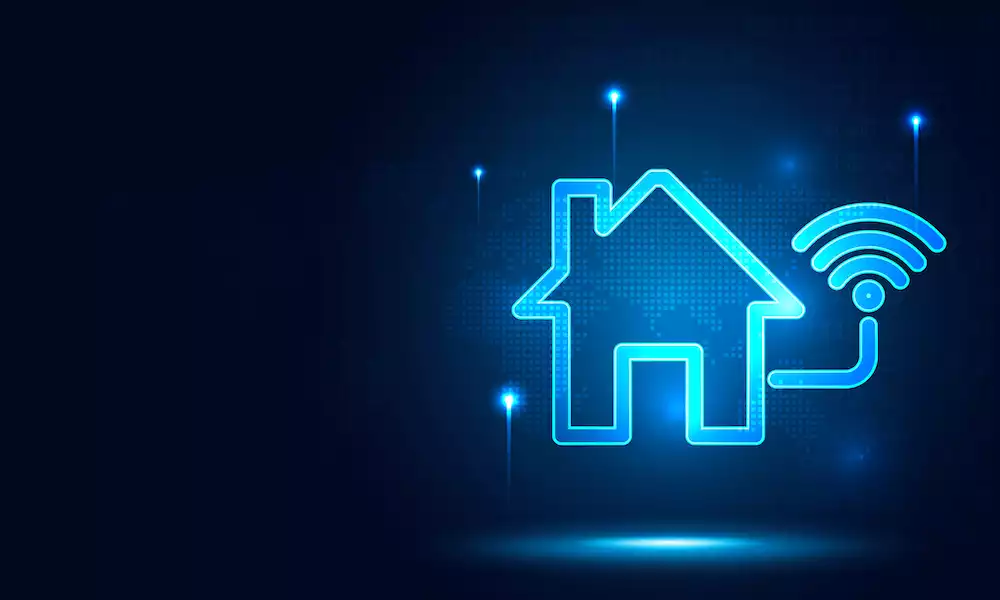Technology
Understanding the Critical Role of Home Internet Security

In an era where connectivity transcends physical boundaries, the home has become a dynamic space of work, learning, and leisure.
The working-from-home trend has made the home much smarter, with automation systems for almost everything and, more pertinently, the focus on internet security, a technical requirement and a household necessity.
As the perimeters of professional and personal lives blend, there is a growing urgency to shield the sanctity of home networks from cyber threats.
Cyber Threats
Amid the conveniences brought by digital transformation is a hidden world of cyber threats.
Every device connected to shared data becomes a potential entry point for malicious attacks, making home internet security the frontline defense.
The reason for internet security in the home is to protect its users’ data, which may include sensitive information like passwords.
What are the most common cyberattacks?
Malware and Phishing
The silent intruders of the digital realm, malware and phishing attacks, are intricate and pervasive.
Phishing is omnipresent, and it’s important every user of computers and devices in the home knows it exists and how to protect their data.
How is malware and phishing detected?
Without getting too technical, there are many ways to detect known malware and phishing, including:
- Signature-based Detection – Identifying known malware through established signatures
- Behavioral Analysis – Detecting anomalies and unusual behaviors indicative of phishing
- URL Filtering – Security solutions can analyze URLs in emails or on websites to determine if they are associated with known phishing or malicious sites
Prevention
There are many more ways to detect malware and phishing; however, what you need to know is how to prevent attacks from happening on your home network.
Passwords
Use a strong password generator and change your passwords regularly.
Always use MFA (multifactor authentication) – for example, using Google Authenticator as the second part of proving you are who you say you are.
Implementing additional layers of security to verify user identity makes it harder for cybercriminals to get to your data. Plus, ensure your home network is encrypted using password-protected Wi-Fi networks.
Regular Software Updates
Keep software and systems updated to patch vulnerabilities. Avoid putting off updating your operating system, plugins, and apps even when sometimes it seems like there is an update to apply every other day.
Ask your family and anyone using your home network if they did the recent software updates.
Using Security Software
With the seismic shift to remote work, a new array of cyber threats has emerged, underscoring the intricate balance between connectivity and security.
VPN
Using a secure VPN (virtual private network) to protect data transfers is a good measure to keep unwanted eyes off your sensitive information.
Firewalls
Additionally, utilizing advanced firewalls to monitor and control incoming and outgoing network traffic is a tight security measure you may want to use if you’re concerned about sensitive data transfers. Also, adhering to robust security protocols to safeguard sensitive information is yet another measure.
URL Filtering Software
Your home network should ensure all users’ email and web access is using filtering software, i.e., spam filters, sender authentication, and URL filtering.
Antivirus Solutions
Employing comprehensive antivirus solutions to detect and mitigate threats.
Educating users on why and how to set up a secure home network makes it harder for cybercriminals to infiltrate systems. Not all users should have the same access.
There is an intricate balance between connectivity and security; as such, users need different permissions and levels of access.
Time To Adapt
Home security now must include cyber security measures. With remote working set to continue in some way, cyberattacks are and will continue to be extremely successful.
Home networks are opportunistic targets for hackers. Therefore, we all need to adapt and be more knowledgeable of the threats and how to prevent them.
Cyberattacks are not stagnant; they mutate, evolve, and emerge more robust with every encounter.
Every household is not just a dwelling but a microcosm of the global cyber landscape, each connected device a potential battlefield.
AI and Automation
The defense arsenal to prevent cybercrime constantly evolves, fueled by technological advancements and insights into cyber attacks.
The synergy of AI and automation represents a paradigm shift in the annals of cybersecurity. It’s a blend of precision, speed, and adaptability, an alliance that anticipates, counters, and evolves in real time, marking the dawn of a responsive defense mechanism.
AI isn’t just a technology; it’s a vigilant sentinel. It scrutinizes network traffic meticulously, flagging anomalies and initiating pre-emptive defenses, ensuring that breaches are mitigated before they escalate.
The ability to predict is the ultimate offensive in cybersecurity. AI employs complex algorithms, sifting through enormous data sets, discerning patterns, and forecasting potential threats. Every prediction is an opportunity for pre-emptive action, transforming cybersecurity from reactive to proactive.
Incorporating automation in defense protocols augments the speed and efficiency of responses. When seconds can delineate the boundaries between security and breach, automated responses neutralize threats with unrivaled acceleration, ensuring the integrity of home networks.
In the constant evolution of cyber threats, adaptability is king. AI learns, adapts, and evolves, ensuring that defenses aren’t just current and several steps ahead of potential threats. Every adaptation is a fortified defense line, a dynamic response to the evolving tactics of cyber adversaries.
Summing Up
The story of home internet security is unfolding before our very eyes as we witness a dynamic interplay between technological advancements and escalating cyber threats.
With the unprecedented surge in remote working, home security and privacy are top of mind.
Our digital presence and use at home need new rules, education, and systems. The good news is we hold the power to fortify our cyber defenses both collectively and individually.






